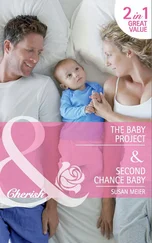The New York Times obituary for Norris Bradbury was published on August 22, 1997.
Peggy Kern, Chandra Reynolds, and Gloria Luong worked with us on this research. Gloria had the rare distinction of coauthoring our major scientific paper while still an undergraduate. For one of our papers on the longevity of the successful men, see M. L. Kern, H. S. Friedman, L. R. Martin, C. A. Reynolds, and G. Luong, “Conscientiousness, Career Success, and Longevity: A Lifespan Analysis,” Annals of Behavioral Medicine 37 (2009): 154-63.
The study of career progression is E. K. Pavalko, G. H. Elder, and E. C. Clipp, Journal of Health and Social Behavior 34 (1993): 363-80 .
Robert Sears, himself a Terman participant, had taken over certain responsibilities for the study and made major contributions to the database, including looking into this aspect of career satisfaction. See R. R. Sears, “Sources of Life Satisfactions of the Terman Gifted Men,” American Psychologist 32 (1977): 119-28.
To read more about Melita Oden’s life, see “Melita Oden, 95, Researcher, Caretaker of Saratoga’s History” in the San Jose Mercury News (CA), April 21, 1993.
Terman’s preface thanking Mrs. Oden is in Terman and Oden, Genetic Studies of Genius , vol. 4, The Gifted Child Grows Up , xi.
The report of picking the weevils is in Time magazine, December 31, 1945.
To read more about Dr. Holland’s system of classification, see J. L. Holland, The Psychology of Vocational Choice: A Theory of Personality Types and Model Environments (Waltham, MA: Blaisdell, 1966).
For a study of personality, productivity, and longevity see H. S. Friedman, M. L. Kern, and C. A. Reynolds, “Personality and Health, Subjective Well-Being, and Longevity,” Journal of Personality 78 (2010): 179-215.
The study of meaningful jobs and happiness is S. Lyubomirsky, L. A. King, and E. Diener, “The Benefits of Frequent Positive Affect: Does Happiness Lead to Success?” Psychological Bulletin 131 (2005): 803-55.
For a review of religion and health see M. E. McCullough, W. T. Hoyt, D. B. Larson, H. G. Koenig, and C. E. Thoresen, “Religious Involvement and Mortality: A Meta-Analytic Review,” Health Psychology 19 (2000): 211-22.
For philosopher David Hume’s essay, see An Enquiry concerning Human Understanding , published in 1748.
Our study with Dr. McCullough is M. E. McCullough, H. S. Friedman, C. K. Enders, and L. R. Martin, “Does Devoutness Delay Death? Psychological Investment in Religion and Its Association with Longevity in the Terman Sample,” Journal of Personality and Social Psychology 97 (2009): 866-82. For more reading on Dr. McCullough’s work, see his book Beyond Revenge: The Evolution of the Forgiveness Instinct (San Francisco: Jossey-Bass, 2008).
For the large-scale, seven-year women’s health study, see E. Schnall, S. Wassertheil-Smoller, C. Swencionis, V. Zemon, L. Tinker, M. J. O’Sullivan, L. Van Horn, and M. Goodwin, “The Relationship between Religion and Cardiovascular Outcomes and All-Cause Mortality in the Women’s Health Initiative Observational Study,” Psychology and Health 25, no. 2 (2010): 249-63.
Last year, in a funny episode, we were approached by a confused insect specialist from another university who wanted advice on how to set up a computer model for social networking based on the typical behaviors of those most social of insects, termites. We had to explain to him that we don’t study the insect termites but the human ones—Terman’s “Termites.” But we were able to add that just as insect termites help ensure the survival of their colonies through cooperation and self-sacrifice, human “Termites” in social networks who lend a hand to others are helping to ensure their own survival.
The Defoe quote comes from The Character of the Late Dr. Samuel Annesley, by Way of Elegy (London: E. Whitlock, 1697).
We describe our study regarding pets in more detail in J. S. Tucker, H. S. Friedman, C. M. Tsai, and L. R. Martin, “Playing with Pets and Longevity among the Elderly,” Psychology and Aging 10 (1995): 3-7.
Dr. Terman’s explanation of the fact that scoring similarly to someone of the opposite sex was not diagnostic of homosexuality is in Terman and Oden, Genetic Studies of Genius , vol. 4, The Gifted Child Grows Up , 201.
For one of our studies of gender and longevity, see R. A. Lippa, L. R. Martin, and H. S. Friedman, “Gender-Related Individual Differences and Mortality in the Terman Longitudinal Study: Is Masculinity Hazardous to Your Health?” Personality and Social Psychology Bulletin 26 (2000): 1560-70.
For a discussion of social roles and mortality risk see I. Waldron, “Contributions of Changing Gender Differences in Behavior and Social Roles to Changing Gender Differences in Mortality,” in Men’s Health and Illness: Gender, Power, and the Body , ed. D. Sabo and D. F. Gordon, 22-45 (Thousand Oaks, CA: Sage, 1995).
Our initial report on the importance of stable moods for boys is in J. E. Schwartz, H. S. Friedman, J. S. Tucker, C. Tomlinson-Keasey, D. Wingard, and M. H. Criqui, “Sociodemographic and Psychosocial Factors in Childhood as Predictors of Adult Mortality,” American Journal of Public Health 85 (1995): 1237-45.
For more information on the relationship between mental difficulties and mortality risk see L. R. Martin, H. S. Friedman, J. S. Tucker, J. E. Schwartz, M. H. Criqui, D. L. Wingard, and C. Tomlinson-Keasey, “An Archival Prospective Study of Mental Health and Longevity,” Health Psychology 14 (1995): 381-87.
More on sex differences in health are in the following three articles: C. M. Gijsbers van Wijk, K. P. van Vliet, A. M. Kolk, and W. T. Everaerd, “Symptom Sensitivity and Sex Differences in Physical Morbidity: A Review of Health Surveys in the United States and the Netherlands,” Women and Health 17 (1991): 91-124; L. M. Verbrugge, “The Twain Meet: Empirical Explanations of Sex Differences in Health and Mortality,” Journal of Health and Social Behavior 30 (1989): 282-304; and K. S. Rook, S. T. Charles, and J. Heckhausen, “Aging and Health,” in Foundations of Health Psychology , ed. H. S. Friedman and R. C. Silver, 234-62 (New York: Oxford University Press, 2007).
Other, shorter-term studies have also found that widowed women often live longer. See for example P. Lichtenstein, M. Gatz, and S. Berg, “A Twin Study of Mortality after Spousal Bereavement,” Psychological Medicine 28 (1998): 635-43; and C. F. Mendes de Leon, S. V. Kasl, and S. Jacobs, “Widowhood and Mortality Risk in a Community Sample of the Elderly: A Prospective Study,” Journal of Clinical Epidemiology 46 (1993): 519-27.
These dramatic findings about bereavement were first published in K. T. Taga, H. S. Friedman, and L. R. Martin, “Early Personality Traits as Predictors of Mortality Risk following Conjugal Bereavement,” Journal of Personality 77 (2009): 669-90 .
Читать дальше











